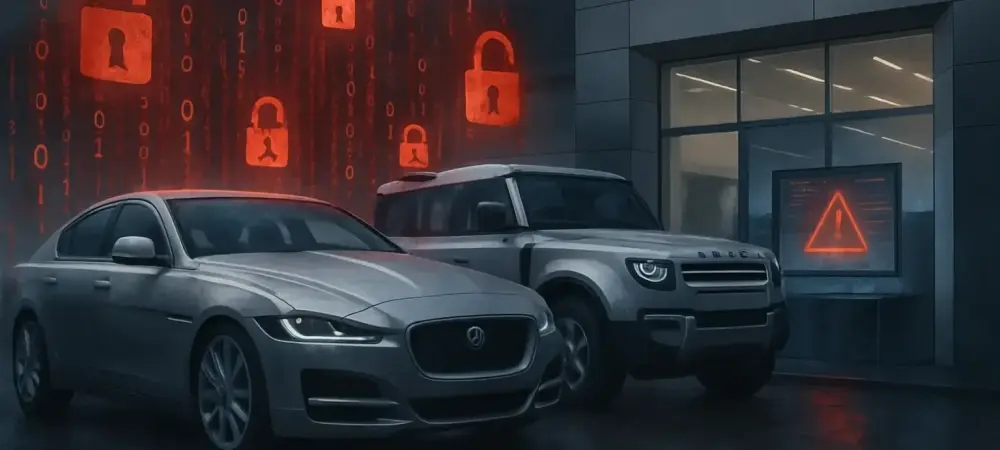What happens when a titan of luxury automotive engineering is brought to its knees by an invisible foe? On September 2 of this year, Jaguar Land Rover (JLR), a cornerstone of British craftsmanship and a subsidiary of Tata, faced a staggering cyberattack that paralyzed its operations. From halted production lines to disrupted supply chains, the breach exposed the fragility of even the most prestigious corporations in a world increasingly reliant on digital systems. This story delves into the chaos, the stakes, and the relentless battle to recover from a blow that shook an industry giant to its core.
Why JLR’s Cyber Crisis Matters to Everyone
This isn’t just a story about one company’s struggle; it’s a stark reminder of how interconnected and vulnerable modern industries have become. The attack on JLR reverberated beyond factory floors, affecting thousands of workers, stalling deliveries to eager customers, and exposing critical weaknesses in global manufacturing networks. Cybersecurity is no longer a niche concern—it’s a cornerstone of economic stability, with a single breach capable of costing millions in lost revenue and trust. For an automaker synonymous with innovation, this incident underscores a chilling reality: no sector is immune to digital threats.
The implications stretch far beyond JLR’s balance sheets. With cars evolving into software-driven machines, the automotive sector is a prime target for cybercriminals seeking to exploit vast troves of data and disrupt intricate supply chains. Industry reports estimate that cyberattacks on manufacturers have surged by over 300% since 2025 began, signaling an urgent need for robust defenses. This crisis serves as a wake-up call, not just for JLR, but for every stakeholder in the digital age.
The Anatomy of a Digital Disaster
The cyberattack struck JLR with ruthless precision, grinding production to a halt across multiple facilities. Factories that once hummed with activity fell silent, with restarts delayed until at least October 1, costing the company untold losses in output and delivery commitments. The scale of disruption painted a grim picture of how deeply integrated—and exposed—modern manufacturing systems are to digital threats.
Beyond the factory walls, the attack snarled JLR’s Global Parts Logistics Centre, a lifeline for supplying retailers in the U.K. and worldwide. Operations at this critical hub were knocked offline, creating bottlenecks that rippled through the supply chain. While the center has since been brought back online as a pivotal early win, the initial chaos highlighted how a single point of failure can cascade into global consequences.
Perhaps most alarming was the revelation of a data breach tied to the attack. Though initially denied, JLR later confirmed that customer information had been compromised, with evidence pointing to the notorious cybercrime group Scattered Spider. This added a layer of reputational damage to the operational turmoil, as trust—a currency as valuable as revenue—took a significant hit among loyal clients.
Voices from the Trenches
As JLR grapples with the fallout, cybersecurity experts have weighed in on the sophistication of the assault. Analysts familiar with Scattered Spider describe the group as a relentless force, often using ransomware and insider vulnerabilities to target corporate giants. One expert noted, “These attackers don’t just exploit systems; they exploit human trust, making them incredibly hard to predict or stop.”
Collaboration has emerged as a cornerstone of JLR’s response, with the National Cyber Security Centre stepping in to provide guidance. A spokesperson from the agency stressed, “Incidents like this are a clarion call for critical industries to prioritize cybersecurity. Recovery is vital, but prevention must become the bedrock of operations.” This partnership reflects a growing trend of public-private alliances in combating digital threats.
On the ground, JLR’s workforce has shown remarkable grit despite weeks of uncertainty. Industry sources reveal that employees have resorted to manual workarounds to maintain minimal functionality in key areas. Their efforts, though limited by the scale of the disruption, underscore a human element of resilience amid a crisis driven by faceless code.
Mapping the Path to Recovery
JLR’s roadmap to normalcy is a calculated blend of urgency and caution, focusing first on restoring essential systems. The reactivation of the Global Parts Logistics Centre and the financial infrastructure for wholesale vehicle sales marked significant milestones, stabilizing supply lines and transaction flows. Enhanced IT capacity has also begun to clear a daunting backlog of supplier payments, easing tensions with critical partners.
Security remains paramount in this rebuilding phase. By partnering with forensic experts and law enforcement, JLR is dissecting the breach to pinpoint exploited weaknesses, ensuring that restored systems are fortified against repeat attacks. Transparent communication about the data breach, including direct outreach to affected customers, is another key step toward mending fractured trust.
Looking ahead, the company acknowledges that full recovery could span months, not weeks. This long-term perspective, coupled with ongoing collaboration with cybersecurity authorities, positions JLR to not only rebound but also to set a standard for industry preparedness. These strategies offer a blueprint for other corporations navigating the treacherous waters of digital disruption.
A Battle Fought, Lessons Learned
Reflecting on Jaguar Land Rover’s ordeal after the September cyberattack, the journey through operational chaos and digital betrayal left an indelible mark on the company. Production lines once stood still, supply chains frayed, and customer trust wavered under the shadow of stolen data. Yet, through methodical restoration and unwavering collaboration, JLR carved a path out of the wreckage.
The next steps demanded more than recovery—they called for reinvention. Strengthening cybersecurity frameworks became non-negotiable, as did fostering a culture of vigilance across every level of the organization. For the broader industry, JLR’s experience stood as a cautionary tale, urging manufacturers to invest in preemptive defenses before the next digital strike. As the dust settled, the focus shifted to building a future where resilience, not just reaction, defined the response to unseen threats.

